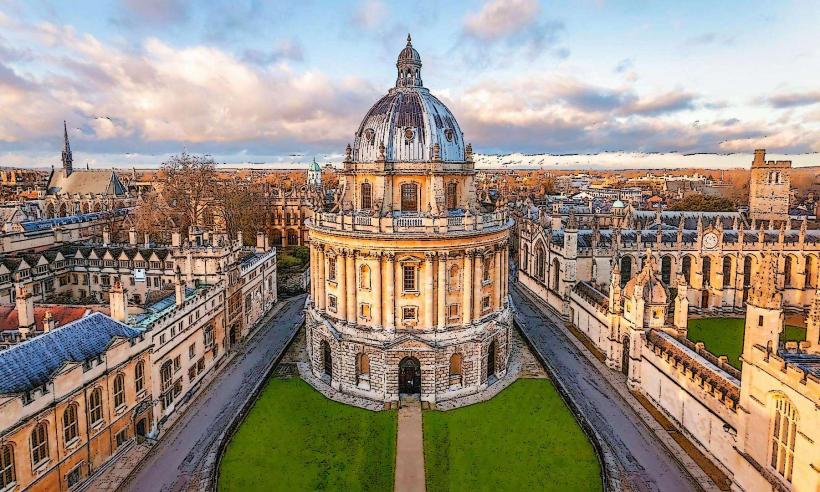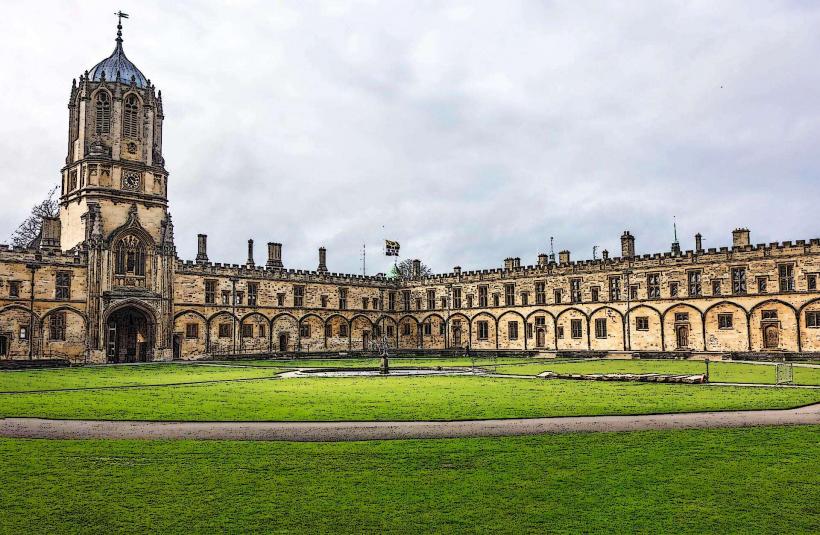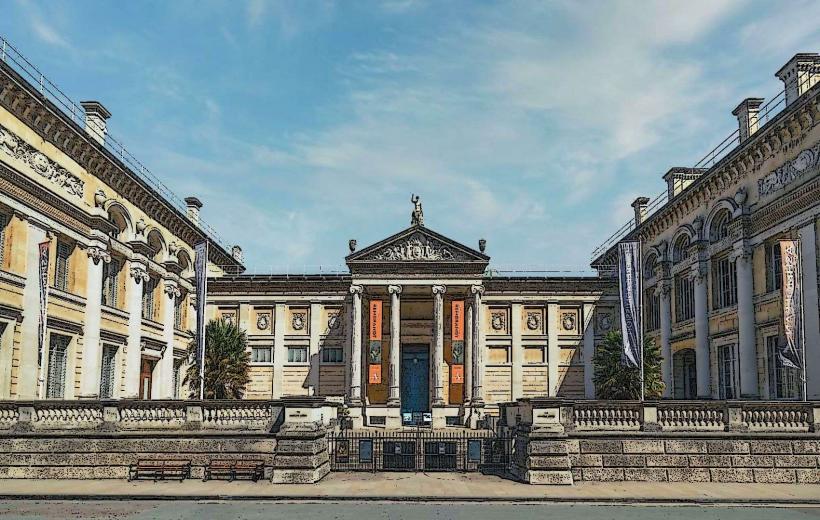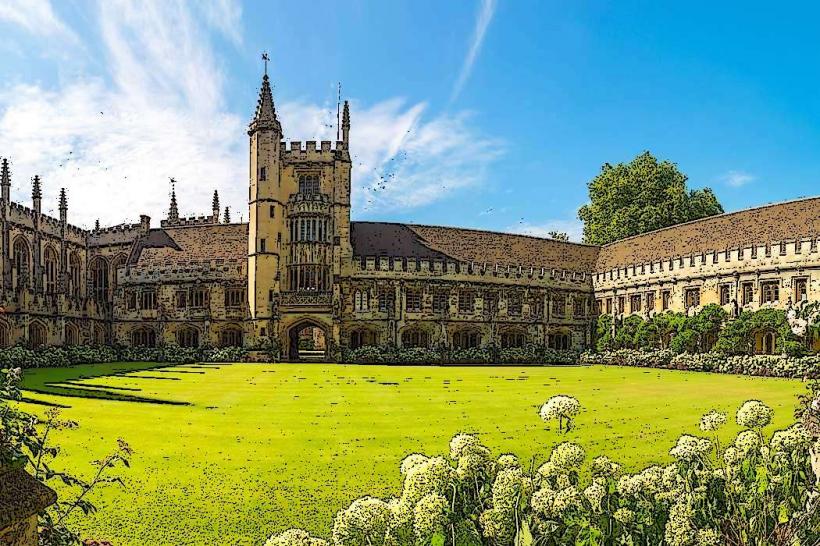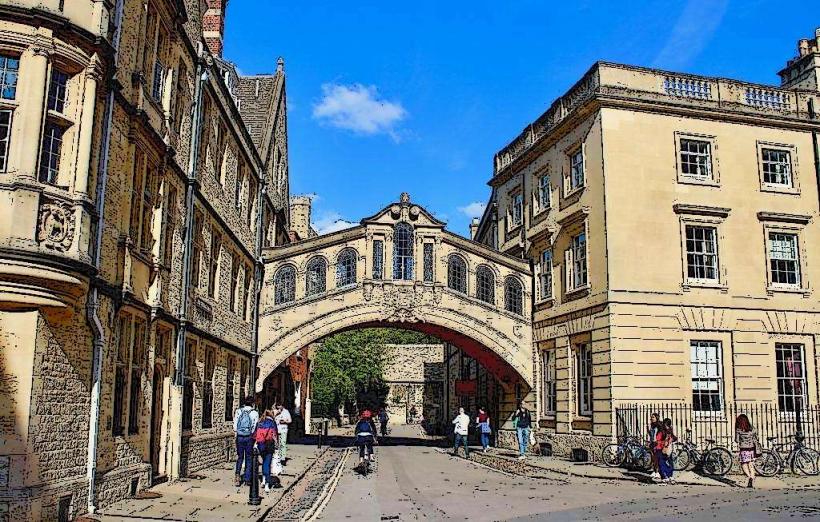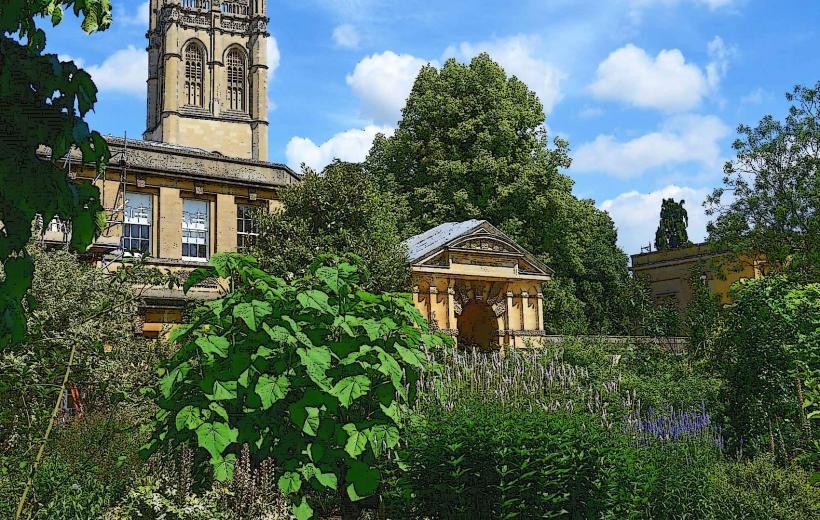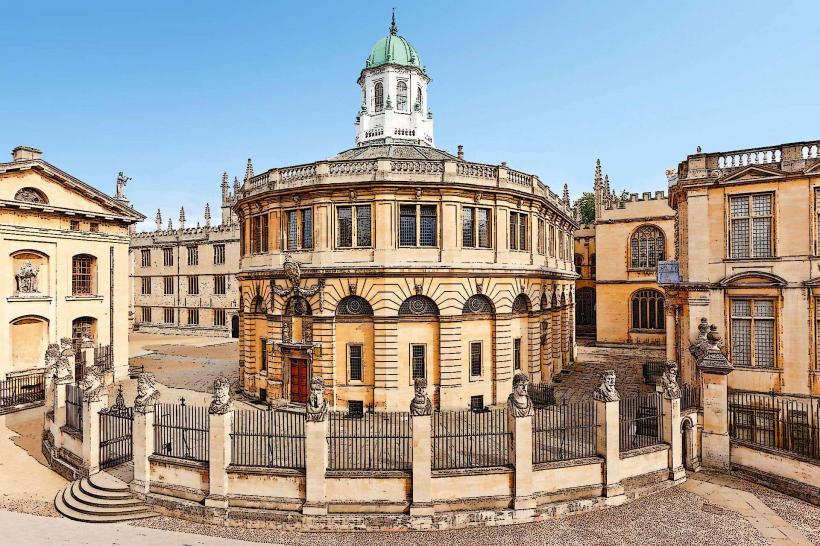Information
Landmark: Bodleian LibraryCity: Oxford
Country: United Kingdom
Continent: Europe
The Bodleian Library is one of the oldest and most renowned libraries in Europe, located in the heart of the University of Oxford. As a vital academic resource for students, scholars, and researchers, it holds an extraordinary collection of books, manuscripts, and historical documents. Its rich history, architectural grandeur, and extensive holdings make it one of the most important libraries in the world.
History and Origins
The Bodleian Library was officially established in 1602, though the origins of the library can be traced back to earlier collections at Oxford University. The library's creation was largely due to the efforts of Sir Thomas Bodley, an Oxford scholar and diplomat, who revived and expanded the university's previous library holdings. Bodley funded the renovation of an existing building, the Divinity School, to house the library’s collection, which became known as the Bodleian in his honor.
Since its foundation, the Bodleian Library has grown substantially, acquiring a vast number of texts from a variety of sources. It has long been an essential resource for scholars of all disciplines and has served as a central institution in the intellectual life of the university.
Architecture and Facilities
The Bodleian Library is renowned for its stunning and historic architecture. The library complex consists of several buildings, each with its own unique character and design, and spans across the central Oxford area.
The Old Bodleian: This is the original library building and one of the most recognizable landmarks of Oxford. The Radcliffe Camera, an iconic circular building, is part of the Bodleian complex and houses a reading room. The Divinity School, a beautiful medieval hall, is also part of the Old Bodleian and serves as a key feature of the library’s heritage.
The Weston Library: In 2015, the Weston Library opened as an extension to the Bodleian, housing rare and valuable collections such as medieval manuscripts, ancient texts, and early printed books. It also serves as a venue for exhibitions and public events.
The Bodleian Law Library: Dedicated to law, this library is part of the larger Bodleian system and holds essential legal texts and historical legal documents.
The library's layout is a blend of Gothic and modern design, combining centuries-old buildings with new, innovative spaces for research and reading.
Collections and Holdings
The Bodleian Library holds millions of items in its collections, covering a broad range of subjects. It is one of the largest libraries in the UK and an important resource for academic research worldwide. Some key features of the Bodleian's holdings include:
Rare Books and Manuscripts: The library’s rare books and manuscripts collection includes works from ancient to modern times, with significant holdings in medieval manuscripts, early printed books (including first editions), and letters and papers of prominent historical figures.
The Oxford English Dictionary (OED): The Bodleian houses a collection of linguistic resources, including the archives of the Oxford English Dictionary, one of the most authoritative sources on the English language.
Special Collections: The library also holds collections on art, science, music, and many other fields. These include letters and papers from influential authors, scholars, and scientists, as well as numerous incunabula (early printed books from the 15th century).
Maps and Prints: The library’s map collection is vast, containing historical maps and cartographic resources that are valuable for historical and geographical research.
Digital Collections: In addition to physical texts, the Bodleian Library has made substantial efforts to digitize and make accessible its rare and important holdings online, reaching a broader global audience.
Role and Access
The Bodleian Library plays a vital role in supporting academic study and research at the University of Oxford. It is one of the legal deposit libraries in the United Kingdom, meaning it is entitled to receive a copy of every book published in the UK. This allows the Bodleian to maintain an extensive and comprehensive collection of printed materials.
Unlike many other libraries, the Bodleian does not allow books to be borrowed. Instead, students and researchers access the materials within the library’s reading rooms and must request specific items from the library’s collections. This system ensures the library’s materials remain preserved and available for use by scholars.
Notable Features and Traditions
The Bodleian's "Seal": When a scholar first receives access to the library, they are required to take an oath of allegiance to the library and its rules. This is a long-standing tradition, dating back to its early days, and the event is marked with a ceremonial signing of the library’s register.
The Divinity School: The library’s medieval reading room, the Divinity School, is renowned for its fan-vaulted ceiling, one of the most intricate and beautiful Gothic architectural designs in Oxford. The Divinity School also served as a filming location in the Harry Potter films.
Exhibitions: The Bodleian regularly hosts public exhibitions, showcasing rare books, manuscripts, and other historical objects from its collections. These exhibitions attract visitors from around the world and help to bring the library’s treasures to a wider audience.
Impact and Global Significance
The Bodleian Library has had a significant impact on academic research, not just at Oxford, but globally. As a key player in the preservation of historical texts and knowledge, it continues to contribute to the advancement of learning. It is also a major hub for scholarly exchange, providing access to a wealth of resources for students and researchers from around the world.
The library's extensive digitization efforts have made many of its rare and valuable texts accessible to people far beyond Oxford. Its rich collections, both physical and digital, continue to shape the study of humanities, science, and the arts.
Conclusion
The Bodleian Library is more than just a repository of books; it is a symbol of intellectual heritage and academic rigor. With its long history, incredible architecture, and vast collections, it remains one of the world’s premier academic libraries and continues to serve as an invaluable resource for researchers, students, and scholars globally.

